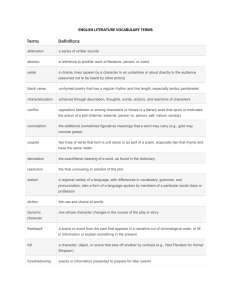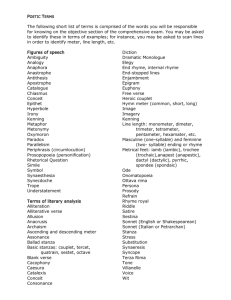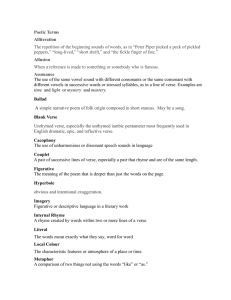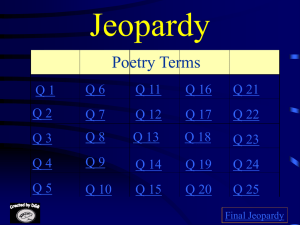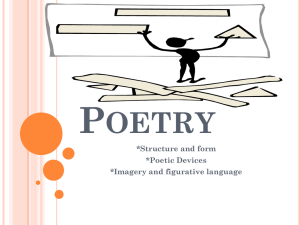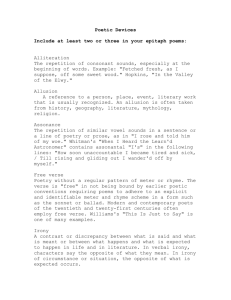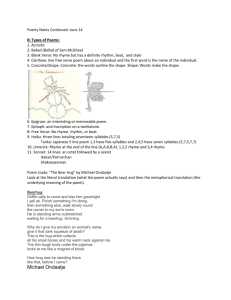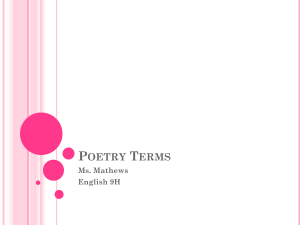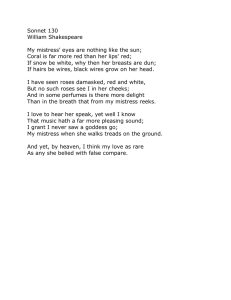`Farmer`s Bride` and `Sister Maude`
advertisement
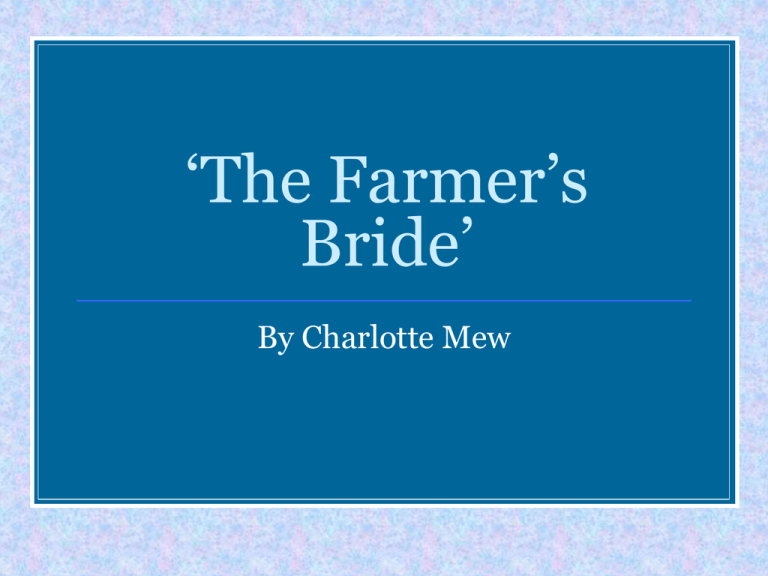
‘The Farmer’s Bride’ By Charlotte Mew Consider ORDERLESS Opening Relationship Devices Emotions Rhythm/rhyme Language Ending Structure Speaker Title What impression do we get from the title? How might it be significant to the relationship? Speaker and Voice Whose voice? How is it characterised? What is the tone? What is significant about the narrative being told from this perspective? Characterising the relationship Consider what we learn about the farmer and his wife. Window side: look at bride’s character Door side: look at farmer’s character What are we, as readers, led to conclude about this couple? The speaker? The poet? Language What kind of imagery is created through the language? What is the effect of this imagery? Are these images developed into extended metaphors? Are there any devices being used heavily? Other features: Portrayal of time? Contrasts? Verbs? Colours? Rhyme and Rhythm Is there any apparent pattern of rhythm? What kinds of lines do we have? What is the effect of this? What about rhyme? How might rhyme contribute to meaning in this poem? (Any repetition?) Rhyme is used extensively - but how? What does it communicate? Form “Mew is known as an early pioneer of free verse – using her variant: ‘rhymed free verse’. Free verse, by definition, doesn’t conform to a set pattern of line-lengths and numbers of lines per stanza. Rhyme is usually associated with conventional patterns, and later developers of free verse dropped rhyme, only using it occasionally to tie-off a poem or emphasise a point.” ‘Sister Maude’ By Christina Rossetti Title What impression do we get from the title? How might it be significant to the relationship? Language Cold/deathly - repeated/emphasised? Why? Regal - why has she used this? Religious - why is this such a key theme? Ballad Form - does the poem do all this? A song that tells a self-contained story Concise - relies heavily on imagery (rather than just description) Can be tragic, historic, romantic, comic Often includes repetition/a refrain Mostly written in quatrains (four line stanzas) Ballad meter = alternating lines of iambic tetrameter (8 syllables) and iambic trimeter (6 syllables) Second and fourth lines of quatrain rhymed (a,b,c,b) Often lots of variation though - yay!

